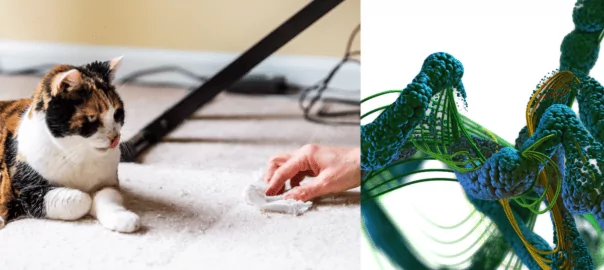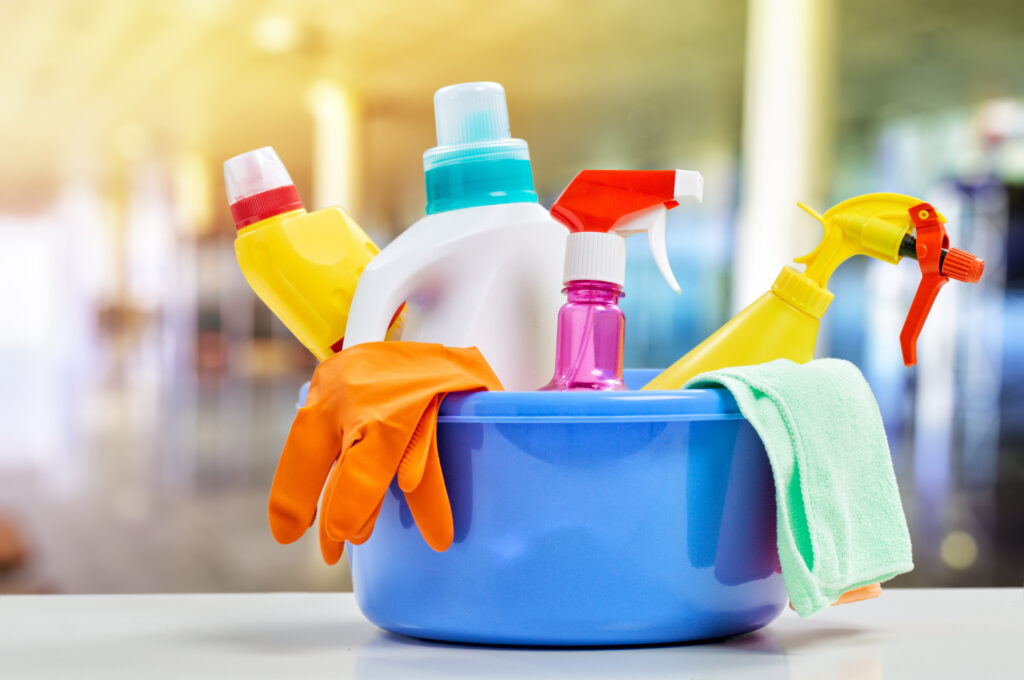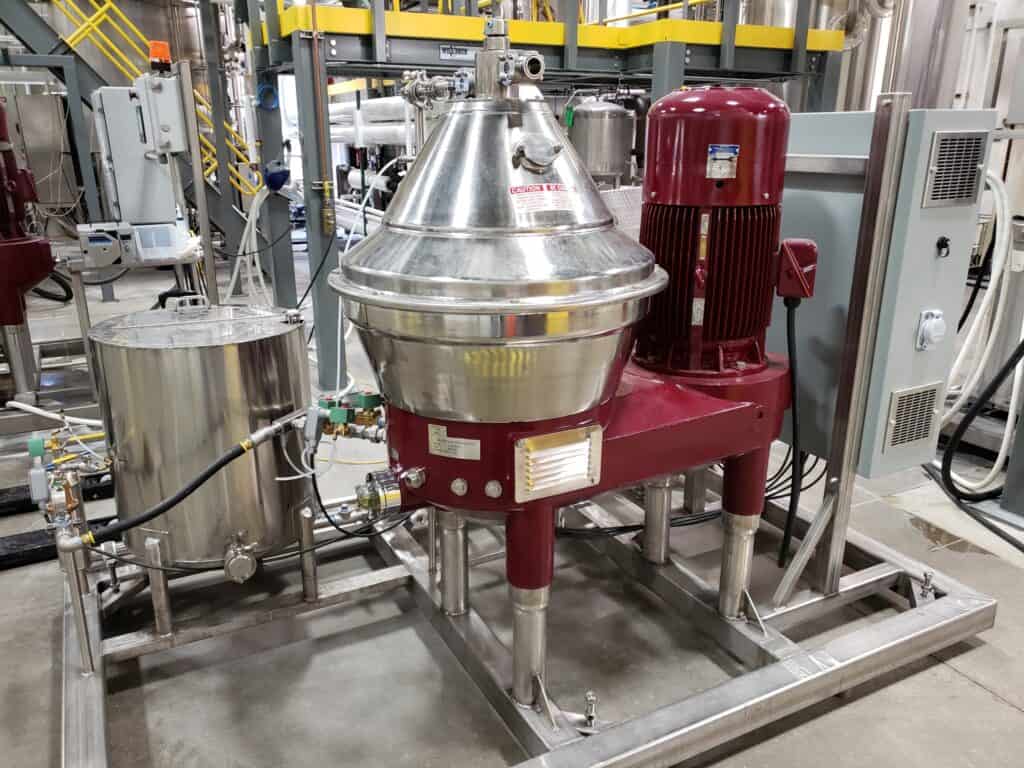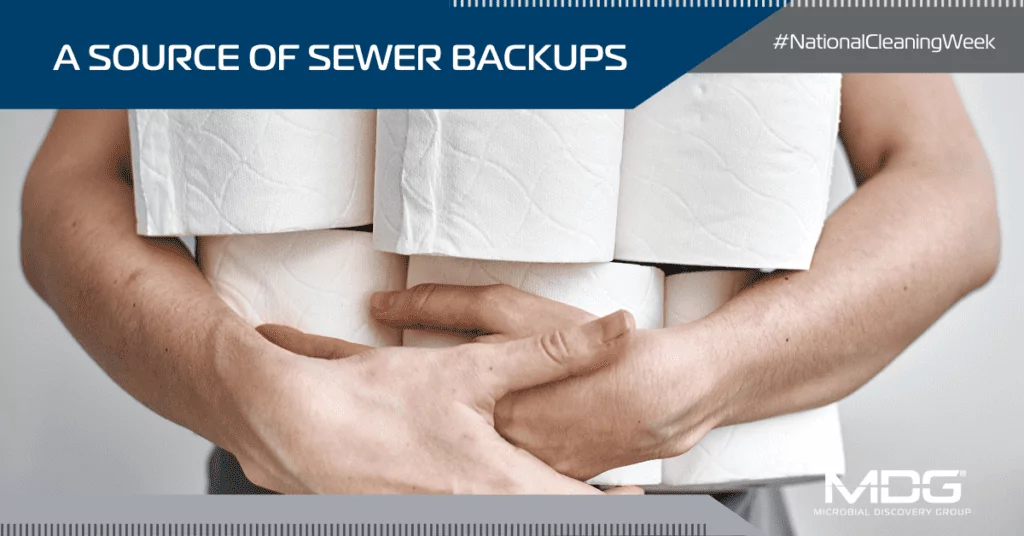Industry Insights and Thought Leadership
Industry Reflections

The Science Behind the Stink
Nobody wants to wake up in the morning to the smell of their pet’s mess. But lucky you, you’re the one who gets to clean it up. Before you run to the cabinet to grab that foaming cleaner with a strong fragranced deodorizer, perhaps it’s best to take a few minutes to understand why your pet’s mess smells the way it does. Knowing this may encourage you to grab a different cleaning option that will do more than mask the odor, it will remove it. To choose the right product, you must understand what compounds you’re up against. Significant insight into the breakdown of feces and odor production has been reported1 and provides good information about why your pets feces smells so bad. Whether we’re discussing dog, cat, or horse feces, all feces odor comes from similar odor-causing compounds. While the diet plays a significant role in the varying quantities of these compounds, you can be certain the culprit is a mixture of these top 5 contributors: 1: Volatile fatty acids (VFAs): VFAs are organic acids produced by the microbial metabolism of biomass and food waste, such as dietary fiber, starch, protein, and amino acids. VFAs are quite odorous, and the variety of […]

Bioaugmentation 101
What is bioaugmentation? The word “bioaugmentation” can be broken down into two parts: -bio and -augmentation. Together, they describe the process of adding helpful, pre-selected bacterial strains that were isolated from a specific environment (biology) to enhance (augment) an existing microbial community. Why are bioaugmentation products used? Just like you and I, not every species and strain of bacteria are good at everything. We all have a unique set of talents and abilities. Bioaugmentation products are used when you want to improve an aspect of an environment biologically (i.e., eliminate foul bathroom odor, digest complex hydrocarbons in soil, reduce wastewater sludge). And while the existing community of bacteria are good at certain things, when we introduce specific strains that are better than others, we can make the entire population more efficient. For example, in wastewater treatment, while the existing community may be good at breaking down specific substrates, the addition of Bacillus has been shown to significantly reduce fats, oils, and grease (FOG), sludge, odors, COD/BOD, suspended solids, the chance for system upsets, and more. How do the bacteria within bioaugmentation products work with the existing microbial community? It is vital to note that rather than taking over the system, […]

What is a Bio-Enzymatic Cleaner?
As cleaning continues to trend upwards, it’s important to understand all the terminology and options in the Industrial and Institutional industry. The term “bio-enzymatic cleaner” is one you’ll come across often, but depending on which customer is requesting it, they may be requiring something different than the next. Here at MDG, we describe bio-enzymatic cleaners as cleaners that use some form of biology to aid in the cleaning or removal of organic material. While many companies may have a similar definition, there is a lack of understanding around the different types of biology used as well as the differing benefits. Many bio-enzymatic cleaners contain either enzymes or bacterial culture which produce enzymes. Both biological ingredients can be used independently or in combination to break down soils, grease, food, or other materials. At MDG, we make biological concentrates for manufacturing companies who then formulate and label bio-enzymatic cleaning products. Each partner of ours is unique in application, business needs, and definitions of success. Depending on the customer, our recommended biological additives changes. The table below highlights some of the main differences between biological additive options: Ingredient Enzymes Bacillus Bacteria Enzyme + Bacillus Combination Definition Enzymes are non-living proteins produced by organisms […]

Good Things Always Happen in 3’s
Well, ok, that’s not exactly how the saying goes, but this modified version seems fitting. Recently, MDG received its third centrifuge to match its three fermentors already in operation. This R2D2 looking device might sound boring, but it’s an essential piece of our custom fermentation arsenal. So, why is having a third centrifuge so important? Simply put, improved production. The centrifuge spins the liquid from a fermentation batch at over 10,000 x g and separates the Bacillus spores from the spent fermentation medium. This process removes about 90% of the water before the freeze or spray drying step. With three fermentors running, totaling 25,000 liters in production capacity, our ability to turn these vessels is dependent on these centrifuges. It’s possible to harvest with one fermentor and with one centrifuge, but it makes for a pretty long day. If you use two centrifuges at once, harvesting is much more manageable. But if one goes down on you during a harvest, it can mess up a shift or a day quickly. Having the third centrifuge gives you multiple options and the same shift redundancy. Just last month, our crew was able to turn 22 fermentation batches with two centrifuges, so imagine how much we’re looking […]

Wastewater Lagoons: Digging Yourself Out of Your Current Hole
One of the biggest advantages to using bioaugmentation for lagoon wastewater treatment is that it can buy you time before your lagoon will need to be dredged. The specialized bacteria get to work on built-up sludge and can increase your capacity for a fraction of the price. However, I once spoke to a wastewater treatment professional that said, “if we need more lagoon space, we don’t dredge; we just dig another hole.” I knew dredging and hauling could be extremely expensive, but I wasn’t sure what digging another “hole” or lagoon would cost. I’m no civil engineer, but I did some surface level digging and found some bid proposals online that suggest the contractor portion alone can range between $5-10M! While I’m sure there is an array of costs involved with this process, I see three main pieces that make constructing a new lagoon harder than it sounds. The cost of: Land Engineering Firm Expertise Time The Price of Land One of the proposals I found from North Dakota indicated that the land at the time was $8000 per acre, with a requirement of 40 acres. That math comes out to $320,000 just in land! Not to mention that the […]

Prepare your Municipal Collection Systems!
Setting the Scene Does this scenario look familiar to you? If you work in municipal collections, of course it does! It’s a fairly standard lift station vacuum truck clean-out. While expensive and tedious, most municipalities have come to reluctantly accept this as an ongoing occurrence and expense. How about this one? That’s right, you are looking at the top view of a confined space entry lift station pit that is 40+ feet down. This one is more unique, but if you’re familiar with this sight you’re also familiar with the hefty bill. The cost of three vac truck personnel and two city personnel onsite for 4 hours PLUS the hauling and disposal fees associated with a truck full of 4,000 gallons of grease and wipes will set you back a pretty penny. The COVID-19 Effect With people spending more time at home instead of at work, you can expect more wipes, toilet paper, grease and solids going down residential sewer lines that weren’t were designed to handle the load. So, while the need for these sorts of cleanouts and expenses are budgeted to happen occasionally, they are going to become increasingly frequent. This increase in usage means more vacuum […]

The Dangers of Hydrogen Sulfide Exposure
Wastewater and collection systems with anaerobic areas, FOG, or sludge build-up provide the perfect environment for hazardous Hydrogen sulfide (H2S) production. Because of this, it’s not uncommon for concentrations to climb above 1000 ppm! To understand the risks, check out the chart below to better understand the dangers associated at every level. ** Click to Enlarge What should you do if you’re dealing with H2S? Enter a safe, effective solution: bioaugmentation! Hydrogen sulfide (H2S) gas is a by-product of sulfur-reducing bacteria (SRB), using sulfur compounds in the absence of oxygen (anaerobic environments). By disrupting growth conditions for SRBs, Bacillus bacteria are able to reduce the production of H2S without the need for harsh chemicals. Connect with our team and we can get ahead of this dangerous and destructive problem together.

8 Things That Don’t Belong in Your Plumbing
With more people staying home as we work to flatten the curve of COVID-19, residential plumbing systems are taking a bit of a beating. Our home plumbing, neighborhood collection systems, and large municipal sewer systems were probably not built for so many people being home at once. Do yourself and your neighbors a favor and think before you flush. So, what on the plumbing blacklist? As a rule of thumb, if it doesn’t dissolve (and stay dissolved) in water, it doesn’t belong in your toilet or down your drain. The list goes on and on, but to name a few… Rags, newspaper, shop towels, and paper towels. We know the toilet paper shortage will likely increase the temptation to flush these down the toilet. Grease. With eating out being less of an option, we’re cooking more meals at home. Restaurants have built-in grease traps that collect any grease that might go down the drain, but residential kitchens aren’t built this way. Please think twice before pouring liquid grease down your sink (or even your toilet). It will harden into a solid somewhere down the line, either within your drainpipes, septic system, or at the lift station – causing headaches for more than just you. Diapers, baby […]

Toilet Paper Hoarding: A Source of Sewer Backups
Many people have been stocking up on toilet paper over the past few weeks. If you haven’t visited the toilet paper aisle in a while, you may be making tough decisions. Most grocery store TP shelves quickly started to collect dust. A lack of toilet paper means that many will turn to alternatives, causing issues for homeowners and municipalities if steps aren’t taken. No toilet paper means Kleenex, wipes, paper towels, shop towels, rags, and newspapers will make their way into the sewer systems. Many of you are already aware of the problems wipes are causing for municipalities. Additionally, homes with septic tanks will cause great problems if they are flushing paper towels and newspaper to their systems. The materials within these TP alternatives are hard to digest. When a sewer system can’t handle the load, it backs up into your own house or apartment. The backup may be caused from your house or your neighbors but regardless of who started the problem, it can quickly turn into a neighborhood disaster. With backups comes the stink, the E. coli, and the viruses. Viruses are always a concern but with the subject heightened around COVID-19, MDG wants to caution everyone to rethink […]

Biotifx® in Action: Lagoons and Ponds
When it comes to treating wastewater lagoons and ponds, our partners follow our full-service treatment approach that combines premier bioaugmentation products, step-by-step treatment programs, and in-field support. This unique combination creates a complete solution that brings real success to their customers – just like this real lagoon treatment story! BACKGROUND One of our distribution partners (DPs) was working with a beverage manufacturer who was utilizing evaporative wastewater holding ponds. Once a pond was filled, they allowed it to dry completely before excavating solids and refilling. A typical cycle included one month to fill the pond, followed by three months of drying. THE CHALLENGE: SLUDGE + ODOR Over some time, an issue arose when a persistent sludge cap formed on the surface of the water. This cap started preventing water from evaporating within their normal three-month cycle and it caused the pond to become anaerobic, releasing strong, unpleasant odors. THE SOLUTION: BIOTIFX® PRODUCTS + PROGRAMS By working with our technical service team and following the step-by-step Lagoon Treatment Program, our DP was able to determine WHERE, WHEN, and HOW MUCH of Biotifx® ULTRA was needed for treatment. Data was collected before, during, and after and included pictures of the sludge cap, basic water […]